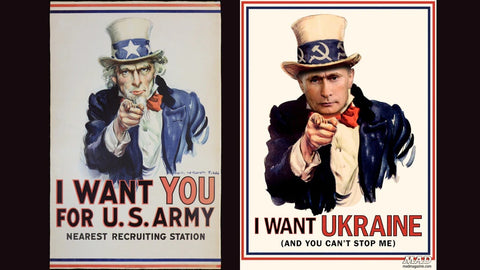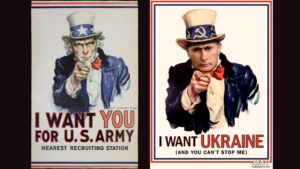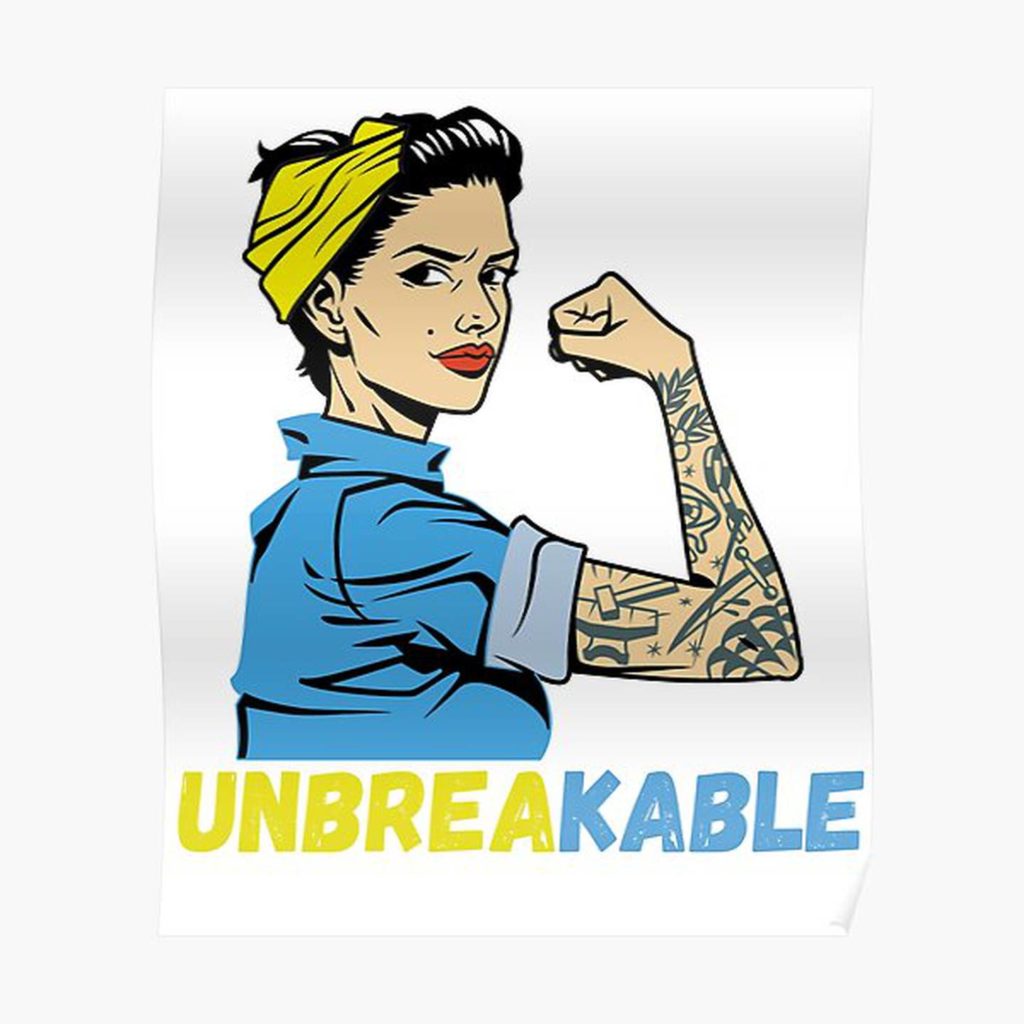
Propaganda Out of Ukraine Conflict is Not Much Different From World War I

The Great War gave rise for the first time to propaganda circulated around the world. Unlike previous wars, however, it was the first time that armies from nations around the globe were locked in widescale conflict, which ultimately gave rise to government and media attempts to manipulate international public opinion.
Propaganda in World War I came in many forms, but according to one historian, it hasn’t deviated much since. In fact, in the current conflict between Russia in Ukraine, it’s easy to observe just how little has changed in the last hundred years.
“World War I brought to the forefront the attention of all the nations that were involved in the war through through posters,” Doran Cart, senior curator for the National World War I Museum and Memorial, told Military Times.

“Propaganda is not new. It’s been around since ancient times. And it’s always really been used as a munition of war to create the feelings that are necessary to either have people join, go to war, provide money, or support the war effort in some fashion or another.”
But what struck Cart was how similar he found World War I posters to the types of print and digital propaganda that has emanated since Russia invaded Ukraine on Feb. 24.
Cart believes not only that the design style utilized during World War I in print is still very much alive today online, but that many of the aggrandized narratives put out between 1914 and 1919 are still deployed now. He added that whether it’s a poster taped to a light post or a graphic shared to social media, much of the messaging is really the same.
“The medium doesn’t really change the story,” he said.
GET HISTORY’S GREATEST TALES—RIGHT IN YOUR INBOX
Subscribe to our Historynet Now! newsletter for the best of the past, delivered every Wednesday.
Cart began analyzing and comparing World War I and II propaganda with some of the imagery, video, and stories emerging from the conflict in Ukraine, which is nearing its third month. What he found were striking similarities in the content being proliferated.
“One of them is this perpetuation of the romantic notion that fighting men embody and embodied everything that people admire and want in their society — that soldiers were created, strong, handsome, and most importantly, invincible,” he said. “That’s one of the main themes that occurred during World I, through World War Two, and all the way up to present day.”
One particular piece that stuck out to Cart was a poster of Russian President Vladimir Putin first seen in Mad Magazine that says “I want Ukraine,” done up much in the same style as America’s most famous piece of recruiting propaganda, the Uncle Sam “I want you” poster.
Like the posters from World War I, Cart said, “it’s basically the same format that’s being used — colorful images, that don’t need a lot of words that really, to show exactly what the feeling is, and to express an idea.”
Originally published on Military Times, our sister publication.
